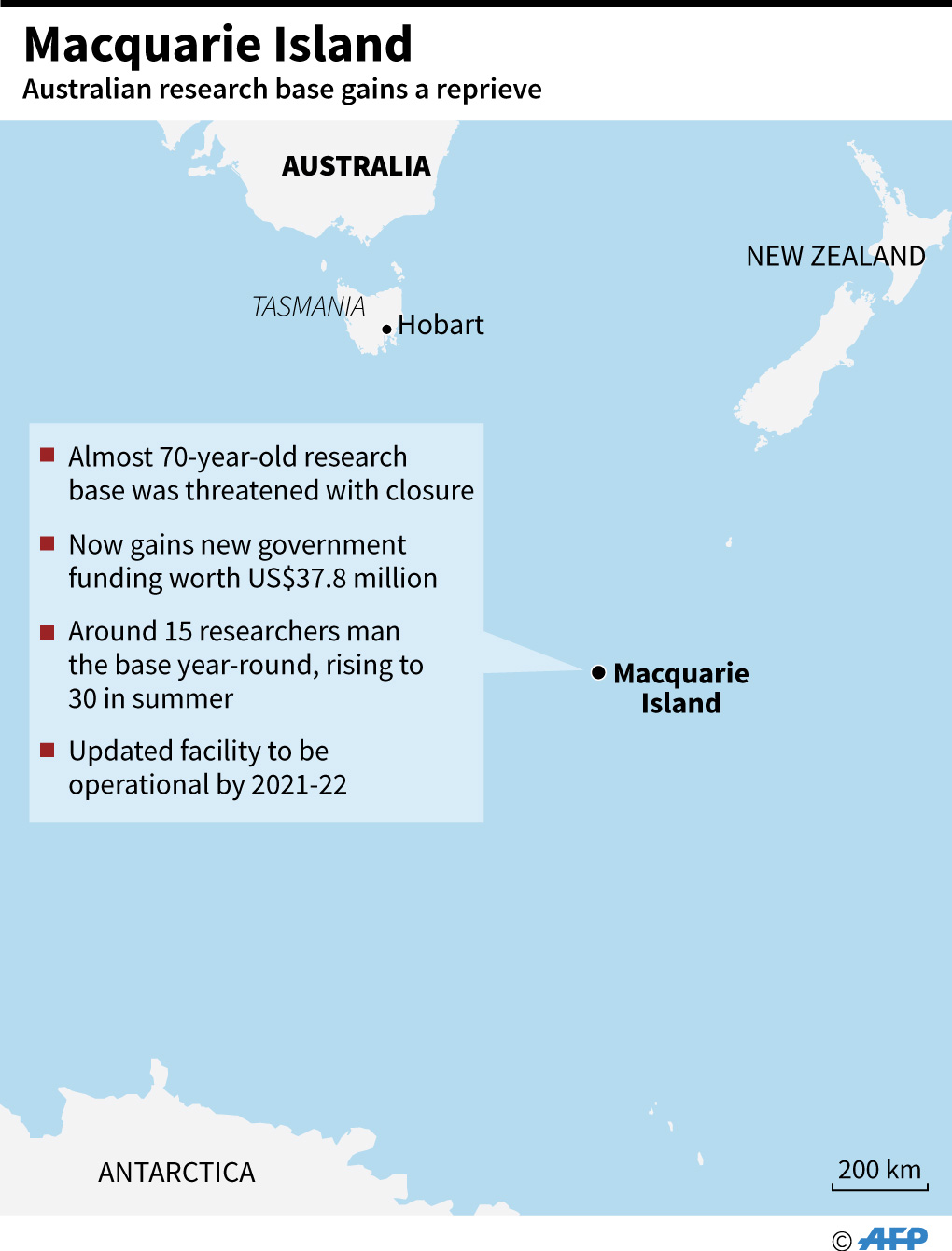
by Martin PARRY
SYDNEY, Australia (AFP) — Australia’s permanent sub-Antarctic research base at World Heritage-listed Macquarie Island has won a reprieve from closure and will instead get a multi-million dollar revamp, the government said Friday, in a boost for science.
The Australian Antarctic Division announced in September the station on the island — which lies in the Southern Ocean between Australia and Antarctica — would shut after almost seven decades due to environmental contamination concerns and ageing infrastructure.
But after pressure from scientists and politicians, Environment Minister Josh Frydenberg said it will now get a new state-of-the-art facility with the government announcing a Aus$50 million (US$37.8 million) funding boost.
“The new station will be the most advanced of its type in the Southern Ocean, capable of supporting the full range of priority activities we have conducted in the past and to ensure a permanent and recurring year round presence,” he said.
“The new modern station will be significantly more efficient than the existing station and be designed to have minimal environmental impact, lower operating and maintenance costs.”
Due to its position as the only base between Australia and Antarctica, Macquarie Island is an important global monitoring location for scientific research, including tracking southern hemisphere weather and gathering climatic data.
Around 15 researchers man the base year-round, rising to 30 in the summer.
Named after an early governor of New South Wales state, Lachlan Macquarie, a scientific presence dates back to Douglas Mawson’s base there during the 1911-14 Australasian Antarctic expedition.
Home to millions of penguins and up to 80,000 seals, it was declared a wildlife sanctuary in 1933 with the permanent base set up 15 years later.
Since then research on the island has contributed to global understanding in many fields including climate change, marine biology, atmosphere physics, geoscience and meteorology.
Wildlife bastion
The AAD admitted in announcing the facility’s closure that science would be impacted, but argued that the cost of refurbishment could not be justified and there would still be ship visits for researchers in summer.
But the decision sparked a public campaign backed by the Tasmanian-based Bob Brown Foundation to save the base.
“Macquarie Island is one of the world’s great wildlife bastions with its countless thousands of penguins, seals and albatross, it is under pressure from tourism and illegal fish poachers as well as climate change,” Brown, a former leader of the Greens Party, said on Friday.
“The minister has made the right decision.”
The island and surrounding waters were put on the World Heritage list in 1997 as a site of major geo-conservation significance, reflecting its unique natural diversity.
A key concern raised by opponents of the closure was that tourism operators, yachts and fishing vessels, which are currently controlled, could get a freer rein if there was no permanent presence.
Jenny Scott from the University of Tasmania, who has been documenting vegetation and landscape changes on the island for 30 years, said millions of dollars had been spent on wiping out rabbits, cats and rats and this could go to waste.
“Apart from the island being vital for climate and ozone observations, its bio-security is also crucially important,” she told AFP.
“Huge amounts of money have been spent on eradication programmes and my main concern was that it could all be wasted by the uncontrolled presence of people. We’ve seen before how rats can so easily get back in the island.
“So I’m really, really pleased that all these concerns have been taken on board.”
The new base is expected to be fully operational by 2021-22.
Several countries have territorial claims on Antarctica — viewed as a potential future source of huge mineral resources — although under a 1949 agreement the frozen continent is designated a scientific preserve. About 30 nations operate permanent research stations on the continent.
© 1994-2016 Agence France-Presse








